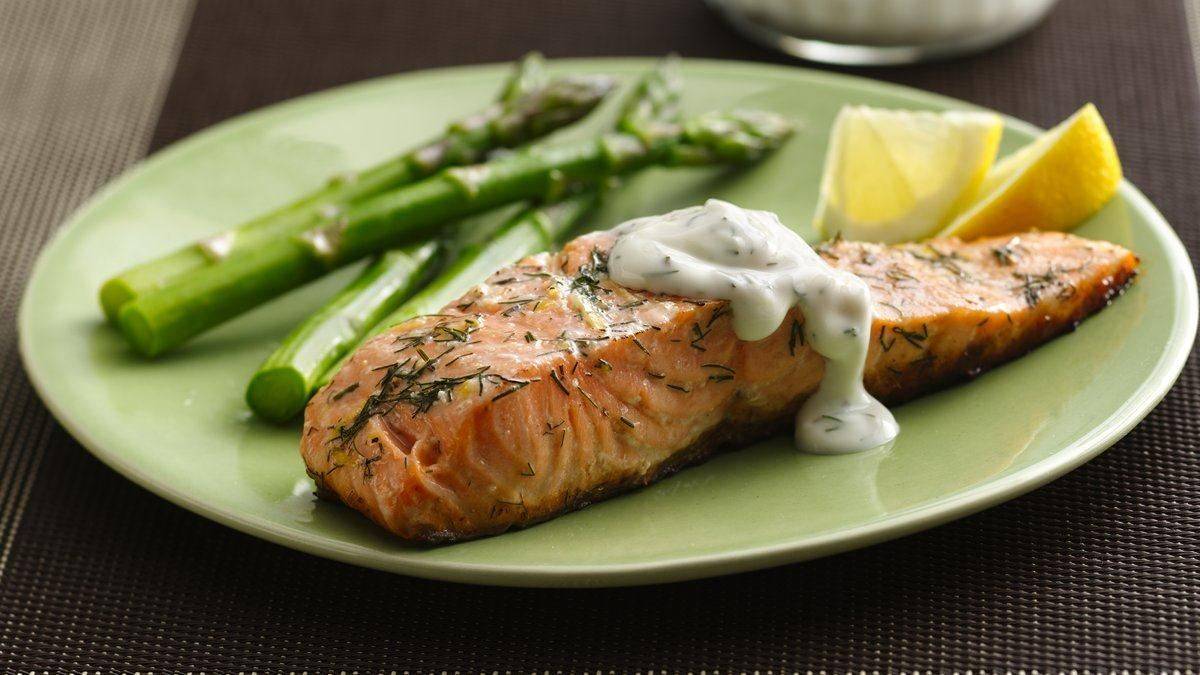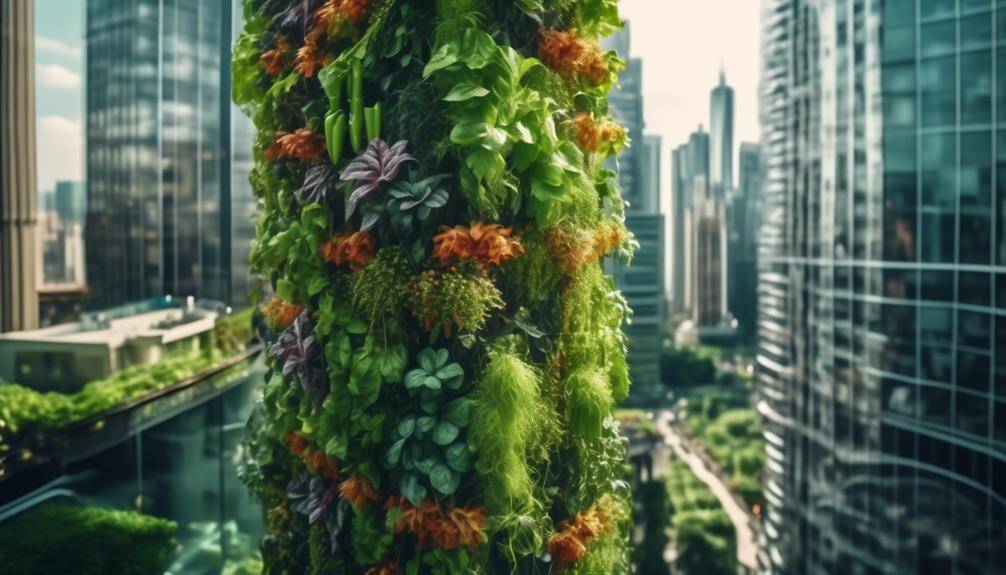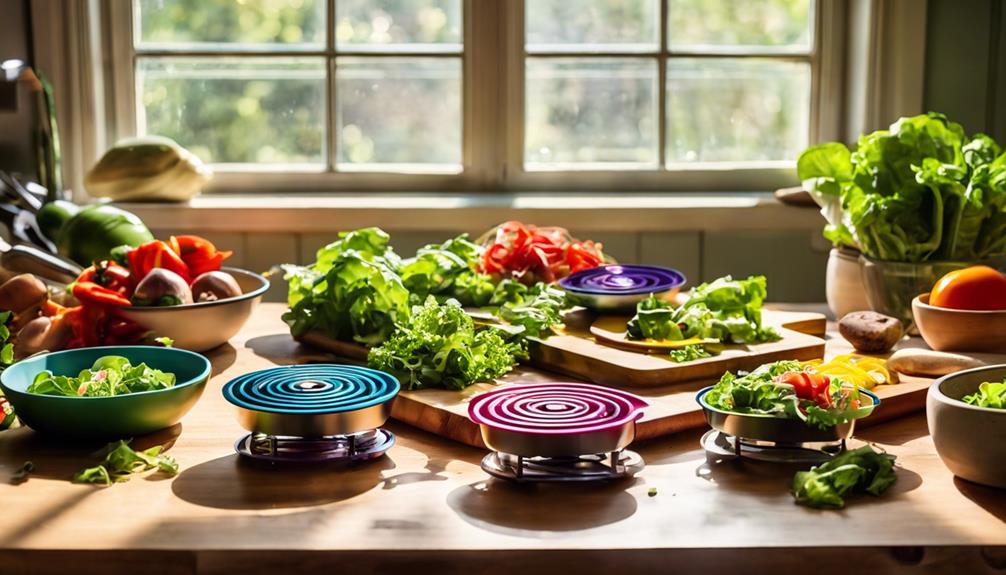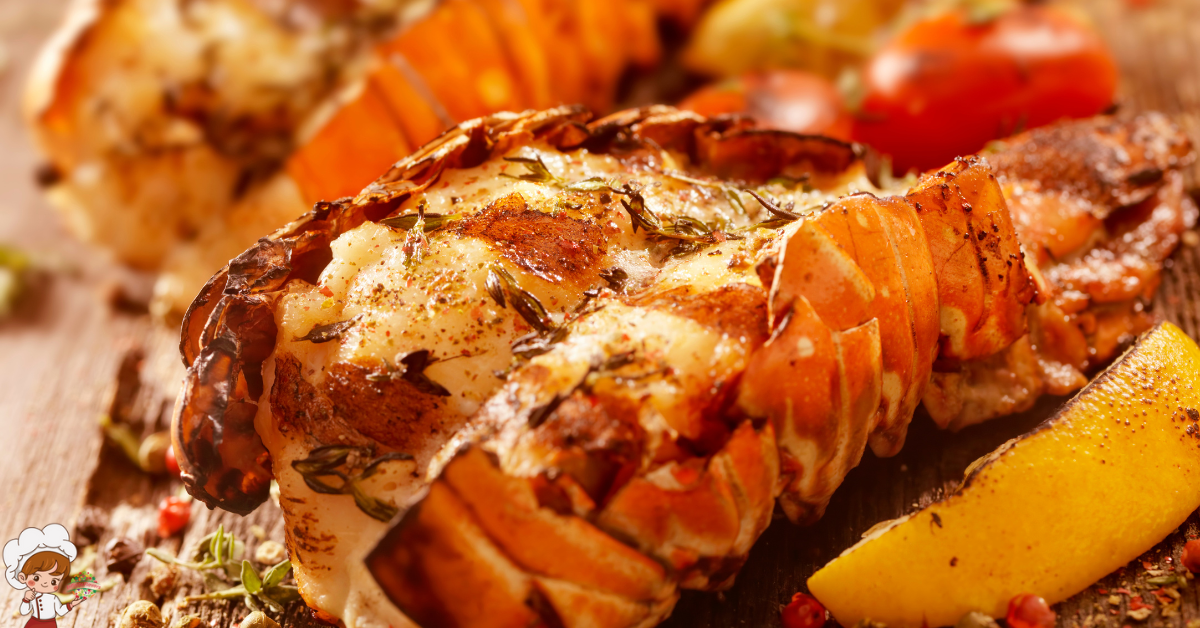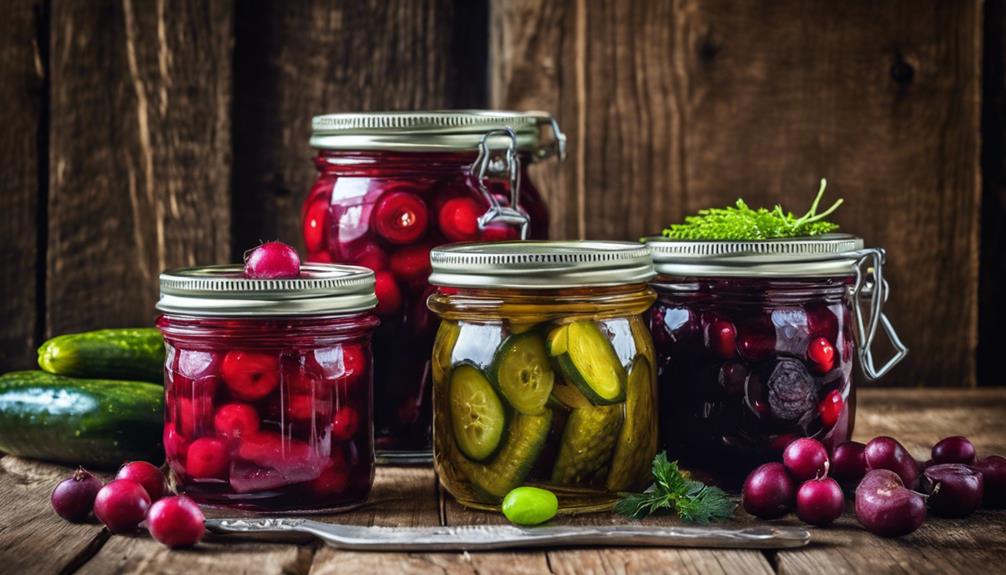Why Molecular Gastronomy Trends in Desserts Is Important
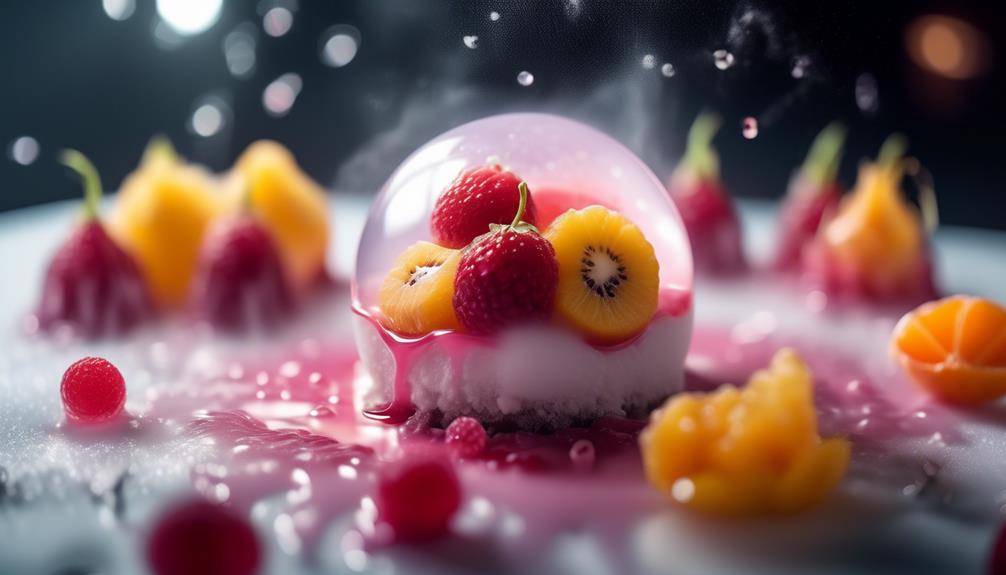
Gastronomy Trends in Desserts; Did you know that the global molecular gastronomy market is expected to reach a value of $8.5 billion by 2026? With an increasing demand for innovative and visually appealing desserts, molecular gastronomy has become a popular trend in the culinary world. But what exactly is molecular gastronomy and how does it influence the creation of desserts? In this discussion, we will explore the fascinating world of molecular gastronomy desserts, uncover the science behind it, discover the popular ingredients and techniques used, and even envision the future of this exciting culinary art form. So, get ready to embark on a journey that will tantalize your taste buds and revolutionize the way you think about desserts.
Introduction to Molecular Gastronomy Desserts
In this section, we will delve into the fascinating world of molecular gastronomy desserts, exploring the scientific and creative techniques that elevate these sweet treats to new levels of culinary innovation. One of the key aspects of molecular gastronomy desserts is their presentation. Chefs who specialize in this field pay meticulous attention to the aesthetics of their creations, using various techniques to create visually stunning desserts that are as pleasing to the eye as they are to the palate. From using liquid nitrogen to create a dramatic smoky effect, to encapsulating flavors in edible spheres, dessert presentation is taken to new heights in molecular gastronomy.
Molecular gastronomy techniques play a crucial role in the creation of these visually captivating desserts. Chefs utilize scientific principles and innovative methods to transform traditional dessert recipes into extraordinary culinary experiences. One such technique is spherification, where liquid ingredients are transformed into small, edible spheres that burst with flavor when bitten into. This technique not only adds a unique textural element to the dessert but also allows for precise control over the release of flavors.
Another technique commonly employed in molecular gastronomy desserts is the use of foams. By incorporating gases such as nitrous oxide or carbon dioxide into dessert mixtures, chefs are able to create light and airy foams that add a delicate and ethereal quality to the presentation. These foams can be flavored with a variety of ingredients, allowing for endless possibilities in terms of taste and texture.
The Science Behind Molecular Gastronomy
Understanding the scientific principles behind molecular gastronomy is essential for chefs seeking to push the boundaries of dessert innovation. By delving into the world of gastronomy experiments and embracing scientific cooking techniques, chefs are able to create desserts that are not only visually stunning but also push the limits of taste and texture. Here are three key scientific concepts that underpin the fascinating world of molecular gastronomy:
- Emulsification: The process of emulsification involves combining two immiscible liquids, such as oil and water, to create a stable mixture. Chefs use emulsification techniques to create unique textures and flavors in their desserts. By understanding the science behind emulsification, chefs can achieve velvety smooth textures in ice creams and mousses, and create surprising flavor combinations by incorporating fat-based ingredients into aqueous components.
- Spherification: Spherification is a technique that enables chefs to transform liquids into gel-like spheres. By using a combination of calcium chloride and sodium alginate, chefs can create a thin membrane around a liquid center. This technique allows for the creation of visually striking desserts, such as caviar-like fruit spheres or bursts of flavored liquid encased in a thin gel shell.
- Sous Vide: Sous vide, meaning “under vacuum” in French, is a cooking technique that involves vacuum-sealing food and cooking it at a precise temperature in a water bath. This method ensures even cooking and the retention of flavors, resulting in tender and flavorful desserts. Chefs can experiment with sous vide cooking to achieve consistent textures and flavors in custards, cakes, and even fruit compotes.
Popular Ingredients in Molecular Gastronomy Desserts
By applying the principles of molecular gastronomy, chefs can incorporate popular ingredients into their desserts, creating innovative and visually stunning culinary creations. Molecular techniques allow for the manipulation and transformation of ingredients, resulting in surprising textures, flavors, and presentations that push the boundaries of traditional desserts. In the world of molecular gastronomy desserts, certain ingredients have become particularly popular due to their ability to interact with these techniques and enhance the overall experience.
One popular ingredient in molecular gastronomy desserts is liquid nitrogen. Its extremely low temperature (-196°C) allows chefs to rapidly freeze ingredients, creating a unique texture and appearance. For example, by immersing a mousse in liquid nitrogen, a thin crust is formed on the outside, while the inside remains creamy and smooth. This contrast in textures adds a delightful surprise to the dessert.
Another popular ingredient is agar-agar, a natural gelling agent derived from seaweed. It can replace traditional gelatin and provides a firmer, more stable gel. Chefs often use it to create intricate shapes, such as spheres or noodles, which add visual interest to the dish. Agar-agar also allows for the creation of unusual textures, such as a gel that melts in the mouth or a gel with a bouncy, elastic texture.
Molecular Techniques for Dessert Creation
To create innovative and visually stunning desserts, chefs employ a variety of molecular techniques that manipulate and transform ingredients, resulting in surprising textures, flavors, and presentations. These dessert innovations are made possible through the application of molecular cuisine techniques, which involve the scientific understanding of the physical and chemical properties of food components. By utilizing these techniques, chefs can push the boundaries of traditional dessert making and create extraordinary culinary experiences.
Here are three examples of molecular techniques that are commonly used in dessert creation:
- Spherification: This technique involves the transformation of liquid ingredients into edible spheres that burst with flavor when consumed. By using sodium alginate and calcium chloride, chefs can create gel-like spheres that encapsulate various flavors and textures. The burst of flavors in your mouth will leave you amazed and delighted.
- Foams: Chefs use a process called foaming to create light and airy textures in desserts. By using ingredients such as gelatin and lecithin, they can transform liquids into stable foams. These foams can be flavored with anything from fruits to herbs, resulting in ethereal and delicate desserts that tantalize your taste buds.
- Liquid Nitrogen: This technique involves the use of extremely cold temperatures to freeze ingredients rapidly. Chefs can create instant ice creams and sorbets by immersing the base mixture in liquid nitrogen. The freezing process is so rapid that it forms tiny ice crystals, resulting in an incredibly smooth and creamy dessert.
These molecular techniques not only enhance the sensory experience of desserts but also allow chefs to showcase their creativity and push the boundaries of culinary artistry. By incorporating scientific principles and innovative approaches, dessert creation has reached new heights in terms of flavor, texture, and presentation. So be prepared to be amazed as you indulge in these extraordinary desserts that defy convention and redefine the possibilities of dessert making.
Molecular Gastronomy Tools and Equipment
To explore the subtopic of ‘Molecular Gastronomy Tools and Equipment’, it is important to understand the essential tools for this culinary technique. These tools include precision scales to measure ingredients accurately, immersion circulators to control temperature during cooking, and whipping siphons to create foams and infusions. Additionally, innovative gastronomy equipment such as rotary evaporators and freeze dryers are used to transform ingredients and create unique textures and flavors. Lastly, must-have molecular gadgets like syringes, pipettes, and molecular spoons aid in the precise manipulation and presentation of dishes.
Essential Tools for Molecular Gastronomy
An array of essential tools is required for practicing molecular gastronomy, as they enable precise and scientific experimentation in the creation of innovative desserts. These tools, often referred to as culinary gadgets or molecular tools, are designed to manipulate ingredients at a molecular level, resulting in unique textures, flavors, and presentations. Here are three essential tools that evoke an emotional response in the audience:
- Spherification Kit: This kit allows you to create visually stunning spheres filled with delicious flavors, adding a touch of surprise and excitement to your desserts.
- Nitrogen Dewar: By using liquid nitrogen, you can instantly freeze ingredients, creating ethereal textures and dramatic effects that captivate the senses.
- Sous Vide Precision Cooker: This tool ensures precise and consistent temperatures, allowing you to achieve perfect tenderness and flavors in your desserts.
These essential tools empower chefs to push the boundaries of traditional dessert-making, creating mesmerizing culinary experiences that leave a lasting impression on diners.
Innovative Gastronomy Equipment
In order to delve into the realm of innovative gastronomy, it is imperative to explore the vast array of molecular gastronomy tools and equipment available to chefs. Today, the field of culinary arts has witnessed remarkable advancements in the development of innovative equipment, integrating cutting-edge technology into the creation of extraordinary dishes.
These tools enable chefs to push the boundaries of traditional cooking techniques and experiment with new textures, flavors, and presentations. From rotary evaporators and freeze-dryers to spherification kits and smoking guns, chefs now have access to a wide range of innovative equipment that allows them to transform ingredients and elevate their culinary creations. This integration of technology not only enhances the dining experience but also showcases the endless possibilities of molecular gastronomy in creating unforgettable desserts.
Must-Have Molecular Gadgets
Molecular gastronomy enthusiasts and professional chefs alike rely on a selection of must-have molecular gadgets, meticulously designed tools and equipment that enable them to unlock the full potential of this innovative culinary technique. These molecular gadgets are not just for professional kitchens, but also for home chefs who want to experiment with molecular gastronomy in their own kitchens. Here are three essential molecular gastronomy tools that will elevate your cooking to a whole new level:
- Sous Vide Machine: This precision cooking method involves vacuum-sealing food in a bag and cooking it at a controlled temperature in a water bath. It ensures even cooking and retains the natural flavors and textures of the ingredients.
- Molecular Gastronomy Kit: This all-in-one kit includes essential ingredients such as agar-agar, calcium lactate, and sodium alginate, as well as tools like syringes, pipettes, and measuring spoons. It allows you to create unique textures, gels, and foams that will surprise and delight your taste buds.
- Liquid Nitrogen Dewar: Liquid nitrogen is a key ingredient in molecular gastronomy, enabling chefs to freeze and shatter ingredients, create instant ice creams, and add a touch of drama to their dishes. A liquid nitrogen dewar is essential for safely storing and dispensing this ultra-cold substance.
Investing in these molecular gadgets will open up a world of possibilities in your kitchen, allowing you to unleash your creativity and wow your guests with innovative and visually stunning desserts.
Edible Art: Creativity in Molecular Gastronomy Desserts
Edible art in molecular gastronomy desserts offers visual delights that go beyond traditional desserts. Through innovative flavor combinations, these edible creations push the boundaries of culinary creativity. The use of science and precision in molecular gastronomy allows chefs to create desserts that are not only delicious but also visually stunning, turning dessert into an art form.
Visual Delights: Edible Art
With their meticulous attention to detail and innovative techniques, molecular gastronomy desserts exhibit a captivating fusion of culinary artistry and scientific precision. These edible masterpieces push the boundaries of traditional desserts, transforming them into mesmerizing works of art that not only tantalize the taste buds but also dazzle the eyes. Through the use of edible sculptures and artistic plating, molecular gastronomy desserts create a multisensory experience that evokes a range of emotions in the audience.
- The intricate sugar sculptures resemble delicate glasswork, evoking a sense of awe and wonder.
- The vibrant colors and imaginative designs on the plate evoke a feeling of excitement and anticipation.
- The delicate balance of flavors and textures in each bite elicits a sense of pleasure and satisfaction.
In this realm of edible art, molecular gastronomy desserts not only nourish the body but also stimulate the mind, creating an unforgettable dining experience.
Innovative Flavor Combinations
In the realm of molecular gastronomy desserts, the creativity and artistry extends to the innovative flavor combinations that captivate the palate. Flavor pairing techniques play a crucial role in creating these intriguing desserts. Molecular gastronomists experiment with unusual ingredient combinations to push the boundaries of flavor profiles and create unique taste experiences.
By combining ingredients that have complementary or contrasting flavors, these desserts offer a delightful sensory journey. Unconventional pairings, such as chocolate and bacon or lavender and lemon, challenge traditional expectations and create surprising and memorable taste sensations. This approach requires a deep understanding of the chemical properties of ingredients and how they interact with each other. The result is a harmonious symphony of flavors that excite and intrigue the taste buds, elevating the dessert experience to new heights.
Molecular Gastronomy Desserts: Sweet and Savory Combinations
Combining sweet and savory flavors in molecular gastronomy desserts adds a unique and innovative dimension to the culinary experience. By using molecular gastronomy techniques, chefs are able to create desserts that not only satisfy the palate but also surprise and delight the senses. Here are three examples of sweet and savory pairings in molecular gastronomy desserts:
- Chocolate and Bacon: The combination of rich, velvety chocolate with smoky and salty bacon creates a flavor profile that is both indulgent and unexpected. The molecular gastronomy technique of infusing bacon fat into chocolate creates a harmonious balance between sweet and savory, resulting in a dessert that is simultaneously decadent and savory.
- Caramel and Sea Salt: The contrast between the sweet caramel and the savory sea salt creates a perfect balance of flavors in molecular gastronomy desserts. The molecular gastronomy technique of creating caramel pearls using sodium alginate and calcium chloride allows for precise control over the texture and presentation of the dish, enhancing the overall culinary experience.
- Mango and Chili: The combination of the sweet and tropical flavor of mango with the spicy kick of chili creates a tantalizing taste sensation. By using molecular gastronomy techniques such as spherification, chefs can create mango caviar with a burst of chili heat, adding a surprising element to the dessert.
These sweet and savory pairings in molecular gastronomy desserts showcase the endless possibilities of combining flavors in innovative and unexpected ways. The use of molecular gastronomy techniques allows for precise control over texture, presentation, and flavor, resulting in desserts that are not only visually stunning but also a delight for the taste buds.
Molecular Gastronomy Desserts: Playing With Textures
When it comes to molecular gastronomy desserts, texture experiments are a key aspect of the culinary experience. Chefs utilize various techniques to create unique textures that elevate the dessert to a whole new level. Flavor encapsulation is one such technique, where flavors are trapped within a gel-like substance, creating bursts of taste as you bite into the dessert. Spherification is another popular technique, where liquid ingredients are transformed into small spheres that add an element of surprise and playfulness to the dessert.
Texture Experiments
Experimenting with textures is a key aspect of molecular gastronomy desserts, allowing for precise control and manipulation of the sensory experience. By altering the texture of ingredients, chefs can create unique and unexpected sensations that elevate the overall dessert experience. Here are three texture experiments that will surely evoke an emotional response in your taste buds:
- Spherification: Transforming liquids into small spheres that burst in your mouth, releasing a burst of flavor.
- Foam: Creating light and airy foams that add a delicate and ethereal quality to desserts.
- Gelification: Using gelling agents to create smooth and jelly-like textures that provide a satisfying mouthfeel.
These texture manipulations not only enhance the visual appeal of desserts but also play with the way they feel on your tongue, enhancing the overall enjoyment and sensory experience. Molecular gastronomy desserts truly push the boundaries of traditional textures, resulting in novel and exciting culinary adventures.
Flavor Encapsulation
Flavor encapsulation is a technique utilized in molecular gastronomy desserts to precisely control and manipulate taste sensations by enclosing flavors within edible spheres or coatings. This technique allows for the controlled release of flavors, creating a unique and dynamic dining experience. By encapsulating flavors, chefs can experiment with different combinations and pairings to enhance the overall taste profile of the dessert. The process involves creating a protective barrier around the flavor molecules, ensuring that they are released at the desired time, resulting in a burst of flavor in the mouth. Flavor encapsulation is not only a way to add complexity to desserts, but also a way to create unexpected flavor combinations that surprise and delight the palate.
Spherification Techniques
One technique used in molecular gastronomy desserts to manipulate textures is spherification. This modern technique is a culinary innovation that allows chefs to create small spheres filled with flavorful liquids. Spherification involves the transformation of a liquid mixture into a gel-like sphere using sodium alginate and calcium chloride.
The process begins by creating a flavored liquid mixture, which is then carefully dripped into a calcium chloride bath. The reaction between the calcium chloride and sodium alginate causes the liquid to form a gel-like membrane around it, resulting in a delicate and visually appealing sphere. The spherification technique offers a unique dining experience, as each bite bursts with flavor and surprises the palate. It is a testament to the ever-evolving world of molecular gastronomy and the constant pursuit of culinary innovation.
Molecular Gastronomy Desserts: Unconventional Flavors
With the advent of molecular gastronomy, traditional dessert flavors have been pushed to the side in favor of unconventional and innovative tastes. The exploration of molecular gastronomy has led to the creation of desserts that feature unusual pairings and molecular twists, resulting in a truly unique sensory experience.
One example of unconventional flavors in molecular gastronomy desserts is the combination of sweet and savory ingredients. Chefs are experimenting with unexpected flavor profiles by incorporating ingredients such as bacon, cheese, and even vegetables into their desserts. This unusual pairing creates a complex and intriguing taste that challenges the traditional notion of what a dessert should taste like.
In addition to unusual pairings, molecular gastronomy desserts also feature molecular twists that transform familiar flavors into something entirely new. Through the use of techniques like spherification and foams, chefs are able to create surprising textures and presentations that elevate the dining experience. For example, a classic lemon tart can be reinvented with the addition of lemon caviar, which consists of tiny, burst-in-your-mouth spheres of lemon juice. This molecular twist not only adds a playful element to the dessert but also intensifies the citrus flavor.
Furthermore, molecular gastronomy allows for the exploration of unique and exotic flavors that are not commonly found in traditional desserts. Ingredients like matcha, yuzu, and black sesame are now being used to create innovative flavor combinations that appeal to the adventurous palate. These flavors add depth and complexity to the desserts, creating a sensory journey for the diner.
Molecular Gastronomy Desserts: Deconstructing Classics
When it comes to deconstructing classic desserts using molecular gastronomy techniques, you can expect flavorful foam creations that elevate the taste experience. These foams are carefully crafted to mimic the flavors of traditional desserts, but with a lighter and more ethereal texture. Additionally, playful texture experiments are employed to add an element of surprise and excitement to the dessert, such as using liquid nitrogen to create instant ice cream. Overall, molecular gastronomy allows for the creation of dessert experiences that break the boundaries of tradition and delight the senses in unexpected ways.
Flavorful Foam Creations
Flavorful foam creations are a prominent feature in the realm of molecular gastronomy desserts, as they deconstruct classic dishes to create innovative and visually stunning culinary experiences. Utilizing advanced foam techniques and a wide range of foam flavors, these creations take desserts to new heights.
- Velvety Vanilla: Indulge in the silky smoothness of a vanilla foam that melts in your mouth, releasing a burst of sweet aroma and delicate flavor. The lightness of the foam adds a whimsical touch to traditional desserts, leaving you craving for more.
- Tangy Citrus: Experience a zesty explosion as the tangy citrus foam dances on your taste buds. The refreshing citrus notes complement desserts and provide a vibrant contrast to rich and creamy elements. Its airy texture enhances the overall sensory experience, leaving a lingering sensation of brightness.
- Decadent Chocolate: Immerse yourself in the luxurious richness of a chocolate foam that envelops your palate. The velvety foam intensifies the decadence of desserts, adding layers of depth and complexity. Its velvety texture creates a harmonious balance of flavors, leaving you in a state of blissful indulgence.
These foam creations not only elevate the taste and texture of desserts but also offer a visually captivating presentation, making them a must-try for any culinary enthusiast.
Playful Texture Experiments
Utilizing innovative techniques in molecular gastronomy desserts, chefs continue to push the boundaries of texture experimentation, exploring new ways to deconstruct classic dishes and create captivating culinary experiences. One emerging trend in playful texture experiments is the creation of textile-inspired desserts. Chefs are using molecular gastronomy techniques to mimic the textures and structures found in textiles, such as silk, velvet, and lace.
By manipulating ingredients and temperature, they are able to create desserts that have the same delicate and intricate textures as these fabrics. Another area of exploration within playful texture experiments is the use of molecular ice cream techniques. Chefs are incorporating liquid nitrogen and other freezing methods to create unique textures in ice cream, such as creamy and smooth textures with a crunchy exterior. These playful texture experiments not only add visual appeal to desserts but also enhance the overall dining experience, making it a multisensory delight.
Surprise-Filled Dessert Experiences
Surprise-filled dessert experiences are a hallmark of molecular gastronomy desserts, where classic dishes are deconstructed to create innovative and tantalizing culinary delights. These desserts go beyond the conventional and aim to surprise and delight the senses of the diner. Here are three examples of surprise-filled dessert experiences that will surely evoke an emotional response:
- Interactive Plating: Imagine a dessert that comes with a blank canvas and an array of colorful sauces and toppings. As you paint and create your own design, the flavors and textures of the dessert blend harmoniously, creating a unique and personalized experience.
- Bursting Flavors: Picture biting into a seemingly ordinary dessert only to discover a burst of unexpected flavors hidden inside. From liquid-filled spheres to hidden pockets of flavored gel, these surprise-filled ingredients add an element of excitement and intrigue to each bite.
- Texture Contrasts: Experience the contrast of textures in a dessert that combines smooth and creamy components with crunchy and crispy elements. Each spoonful offers a delightful surprise as you navigate through a symphony of textures that dance on your palate.
Surprise-filled dessert experiences provide a sensory adventure, engaging not only the taste buds but also the eyes and sense of discovery. By incorporating interactive plating techniques and surprise-filled ingredients, molecular gastronomy desserts elevate the dessert experience to new heights of excitement and satisfaction.
Molecular Gastronomy Desserts: Interplay of Temperature
By carefully manipulating temperature, molecular gastronomy desserts achieve unique textures and flavors that enhance the dining experience. The interplay of flavors and the use of molecular gastronomy techniques allow chefs to create desserts that go beyond the traditional boundaries of taste and texture. Temperature plays a crucial role in this process, as it can affect the structure and behavior of ingredients, leading to innovative and exciting dessert creations.
One technique that utilizes temperature in molecular gastronomy desserts is spherification. By combining a liquid with sodium alginate and submerging it in a calcium chloride bath, chefs can create spheres with a thin, gel-like membrane. These spheres are often served chilled, which enhances the contrast between the outer membrane and the liquid filling, resulting in a burst of flavor and texture in every bite.
Another temperature-related technique is the use of liquid nitrogen. By rapidly freezing ingredients, chefs can create desserts with a unique texture and presentation. The extreme cold of liquid nitrogen freezes the ingredients quickly, resulting in smaller ice crystals and a smoother texture. This technique is often used to create ice creams and sorbets with a velvety texture and intense flavors.
Additionally, temperature can be used to manipulate the texture of ingredients. For example, by heating chocolate to a specific temperature and then cooling it rapidly, chefs can create delicate and crisp chocolate shells that encase creamy fillings. This technique, known as tempering, ensures that the chocolate has a glossy appearance and a snap when bitten into.
Molecular Gastronomy Desserts: Molecular Mixology
The application of molecular mixology in molecular gastronomy desserts allows for the creation of innovative and scientifically precise flavor combinations and presentations. By incorporating molecular mixology techniques, chefs are able to push the boundaries of traditional dessert-making and create unique culinary experiences. Here are three exciting ways in which molecular mixology enhances dessert creations:
- Foams and Emulsions: Molecular mixology techniques such as spherification and emulsification can be used to create foams and emulsions with dessert ingredients. These airy and light textures add a playful and whimsical element to the dessert, creating a visually stunning and delightful experience for the diner.
- Caviar and Pearls: Using the process of reverse spherification, molecular mixologists can create small, bursting spheres of liquid that resemble caviar or pearls. These tiny flavor bombs can be filled with various fruit juices, liqueurs, or even flavored syrups, adding bursts of flavor to the dessert.
- Smoking and Aromatization: Molecular mixology techniques can also be used to infuse desserts with unique and unexpected aromas. By using tools such as smoke guns, chefs can add a smoky element to the dessert, creating a multisensory experience that both surprises and delights the diner.
Through the use of molecular mixology techniques, chefs are able to create molecular cocktail creations in the form of desserts. These innovative and scientifically precise flavor combinations and presentations enhance the overall dining experience, leaving diners with a sense of awe and excitement. So, the next time you indulge in a molecular gastronomy dessert, prepare to be amazed by the creative use of molecular mixology.
Molecular Gastronomy Desserts: Aromas and Smoke
With the incorporation of molecular mixology techniques, chefs can elevate their dessert creations by infusing them with distinctive aromas and subtle smoky notes, enhancing the overall sensory experience for the diner. Aromas and smoke play a crucial role in flavor pairing and can greatly impact the perception and enjoyment of a dessert.
Aromas, often referred to as the “nose” of a dish, contribute significantly to the overall flavor profile. By using molecular gastronomy techniques, chefs can extract and concentrate natural aromas from ingredients, creating intense and unique flavor combinations. For example, through the process of steam distillation, essential oils can be extracted from herbs or fruits and incorporated into dessert preparations. This allows for the creation of desserts with aromatic infusions, adding complexity and depth to the flavor profile.
Smoke, on the other hand, adds a distinct sensory experience to desserts. By using techniques such as smoking with wood chips or utilizing smoke guns, chefs can infuse desserts with a subtle smoky flavor. This technique is particularly popular in desserts like smoked chocolate mousse or smoked vanilla ice cream. The smoky notes complement and enhance the sweetness of the dessert, creating a harmonious balance between flavors.
The combination of aromas and smoke in molecular gastronomy desserts creates an immersive sensory experience for the diner. The scents and flavors stimulate the taste buds and olfactory receptors, leading to a more enjoyable and memorable dessert experience. Chefs can experiment with different aroma combinations, such as floral and fruity notes or smoky and earthy undertones, to create desserts that surprise and delight the palate.
Molecular Gastronomy Desserts: Interactive Dining Experiences
What are the key elements that make molecular gastronomy desserts an interactive dining experience?
Interactive plating: Molecular gastronomy desserts often involve intricate and visually stunning presentations. The way these desserts are plated is an important element in creating an interactive dining experience. Chefs utilize various techniques to create visually captivating dishes that engage all the senses. From swirling sauces to delicate sugar art, the plating of molecular gastronomy desserts invites diners to engage with the dish on a visual level, creating anticipation and excitement.
Sensory experiences: Molecular gastronomy desserts go beyond taste and appeal to all the senses. The use of innovative techniques and ingredients allows for the creation of desserts that offer unique sensory experiences. Whether it’s the crackling sound of liquid nitrogen or the release of aromas from a smoke-filled container, these desserts aim to surprise and delight diners by engaging multiple senses simultaneously.
Tableside preparation: Another key element in creating an interactive dining experience is the incorporation of tableside preparation. Molecular gastronomy desserts often involve the use of special equipment and techniques that require on-the-spot preparation. Chefs may pour liquid nitrogen over a dessert to create a dramatic effect, or use molecular spherification to transform a liquid into solid spheres right in front of the diner. This element of surprise and interaction adds an extra layer of excitement to the dining experience.
The Future of Molecular Gastronomy Desserts
To explore the potential advancements in molecular gastronomy desserts, we must consider the evolving techniques and innovative ingredients that will shape the future of this interactive dining experience. The future of molecular gastronomy desserts holds great promise as chefs continue to push the boundaries of culinary creativity.
One of the key aspects that will shape the future of molecular gastronomy desserts is the evolving techniques. Chefs are constantly experimenting with new methods and approaches to create unique and visually stunning desserts. For example, the use of liquid nitrogen to freeze ingredients instantly has been a popular technique in molecular gastronomy. This allows chefs to create delicate and ethereal textures that are not possible with traditional cooking methods.
Another aspect that will define the future of molecular gastronomy desserts is the use of innovative ingredients. Chefs are increasingly incorporating unconventional ingredients into their creations to add unexpected flavors and textures. For instance, ingredients like edible flowers, dehydrated fruits, and foams made from various liquids are being used to enhance the overall dining experience.
Furthermore, technology will play a significant role in the future of molecular gastronomy desserts. As technology continues to advance, chefs will have access to more sophisticated equipment and tools to create even more intricate and complex desserts. This includes 3D printers that can create edible structures and textures, as well as virtual reality experiences that can enhance the sensory aspects of the dining experience.
Gastronomy Trends in Desserts; Frequently Asked Questions
What Are Some Popular Molecular Gastronomy Techniques Used in Creating Desserts?
Some popular techniques used in creating molecular gastronomy desserts include spherification, foams, and gels. These techniques involve manipulating the texture and presentation of ingredients, resulting in unique and visually stunning dessert creations.
How Do Molecular Gastronomy Desserts Incorporate Unconventional Flavors?
Molecular gastronomy desserts incorporate unconventional flavor combinations and create unexpected taste profiles. By utilizing scientific techniques, these desserts push the boundaries of traditional flavors, resulting in unique and exciting culinary experiences.
Can You Provide Examples of Sweet and Savory Combinations in Molecular Gastronomy Desserts?
Sweet and savory combinations in molecular gastronomy desserts involve unexpected flavor pairings. These combinations create a unique sensory experience, combining traditional dessert flavors with savory elements, resulting in a delightful and surprising taste sensation.
What Are Some Unique Textures That Can Be Achieved With Molecular Gastronomy Techniques in Desserts?
Exploring innovative textures in molecular gastronomy desserts involves pushing the boundaries of dessert presentation. Techniques like spherification, foams, and gels can create unique textures like creamy spheres, airy foams, and jiggly gels.
How Do Molecular Gastronomy Desserts Incorporate Aromas and Smoke Into the Dining Experience?
To incorporate aromas and smoke into the dining experience, molecular gastronomy desserts utilize aroma enhancing techniques and smoking techniques. These methods allow for the creation of unique sensory experiences that enhance the overall enjoyment of the dessert.
Conclusion
In conclusion, molecular gastronomy has revolutionized the world of dessert creation by introducing scientific techniques and innovative ingredients. Through the use of molecular tools and equipment, chefs are able to create interactive dining experiences that engage all the senses. The future of molecular gastronomy desserts holds great potential for further experimentation and creativity. With its focus on precision and scientific principles, this culinary trend is sure to continue pushing the boundaries of dessert innovation.



